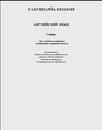Название: Английский язык Жанр: Филология Рейтинг: Просмотров: 2938 |
Unit 2. reading strategiesDIFFERENT KINDS OF TEXTS, SERVING DIFFERENT PURPOSES, REQUIRE DIFFERENT READING STRATEGIES The following are the most commonly used strategies for reading scientific texts: A. SKIMMING - This involves: 1. Reading through the opening section until you have some idea of what the writer's thesis is — what he's out to reveal or prove. Usually the first paragraph will be enough, but sometimes the writer doesn't get down to his actual thesis until after a few introductory paragraphs. If this seems to be the case, glance over the introductory section and only begin reading carefully after the writer actually gets down to the issue he's presently concerned with. Then when you feel you know what his thesis is, you can start to «skim» rapidly through the rest of the text. 2. Glancing over the rest of the text, paragraph by paragraph, trying to locate the key sentence within each paragraph and to follow the writer's train of thought (tofollow his argument). If you get lost (if you find that you no longer know what he's talking about) backtrack a bit and try to find out where you got lost and what new idea he introduced at that point (you may have missed it because it was in the middle of a paragraph, and not at the beginning or end, where new ideas are most commonly introduced). 3. Reading through the closing section to see if you actually did understand the thesis in the opening section (which, presumably, you were able to follow by glancing through the body of the text). The conclusion usually refers back to the opening and confirms the thesis presented there, sometimes summarizing the important material in the body of the text which was meant to support the thesis. B. SCANNING This involves glancing over the individual lines of the text, looking for specific pieces of information (names, dates, subtitles, a key sentence introducing a specific idea you're particularly interested in, the place in the text where one section ends and a new idea is introduced, etc.) C. READING INTENSIVELY Once you know which parts of the text contain the information you're particularly interested in, you can concentrate on reading those parts with special care, weighing each word to make sure that you haven't misunderstood or missed anything the writer communicated either directly (explicitly) or indirectly (implicitly). Look up the words you don't understand in a good dictionary. If you're not sure you understood exactly what the writer means, go back to see if the preceding context is helpful. If that doesn't help, read ahead to see if what follows clarifies for you. Exercise: The following list includes various kinds of texts. Decide which of the three strategies — or which combination of them, and in what order — would be suitable for each: 1. a menu 2. a page in the dictionary 3. a road map 4. a diagram in a scientific article 5. an article in a scientific journal reporting on the research of someone in your field whose work you admire 6. an article in «Time» or «Newsweek» 7. a caption under a photograph 8. a page in the telephone book 9. an advertisement for something you're thinking of buying 10. a label on a food package 11. instructions for the use of a new appliance 12. the note included in the box of a prescription drug giving active ingredients, dosage, side effects, storage instructions, etc. 13. a book on your course bibliography 14. a poem 15. a short story 16. a novel 17. a set of classroom notes borrowed from your friend before the final exam in a course you have seldom attended 18. an article written by a professor whose course you're taking
|
|

|
- Акмеология
- Анатомия
- Аудит
- Банковское дело
- БЖД
- Бизнес
- Биология
- Бухгалтерский учет
- География
- Грамматика
- Делопроизводство
- Демография
- Естествознание
- Журналистика
- Иностранные языки
- Информатика
- История
- Коммуникация
- Конфликтология
- Криминалогия
- Культурология
- Лингвистика
- Литература
- Логика
- Маркетинг
- Медицина
- Менеджмент
- Метрология
- Педагогика
- Политология
- Право
- Промышленность
- Психология
- Реклама
- Религиоведение
- Социология
- Статистика
- Страхование
- Счетоводство
- Туризм
- Физика
- Филология
- Философия
- Финансы
- Химия
- Экология
- Экономика
- Эстетика
- Этика
Лучшие книги
Гражданский процесс: Вопросы и ответы
ЗАПАДНОЕВРОПЕЙСКОЕ ИСКУССТВО от ДЖОТТО до РЕМБРАНДТА
Коммуникации стратегического маркетинга
Консультации по английской грамматике: В помощь учителю иностранного языка.
Международные экономические отношения


 Читать: Part
i Section 1. introduction to word power (wp)
Читать: Part
i Section 1. introduction to word power (wp)
